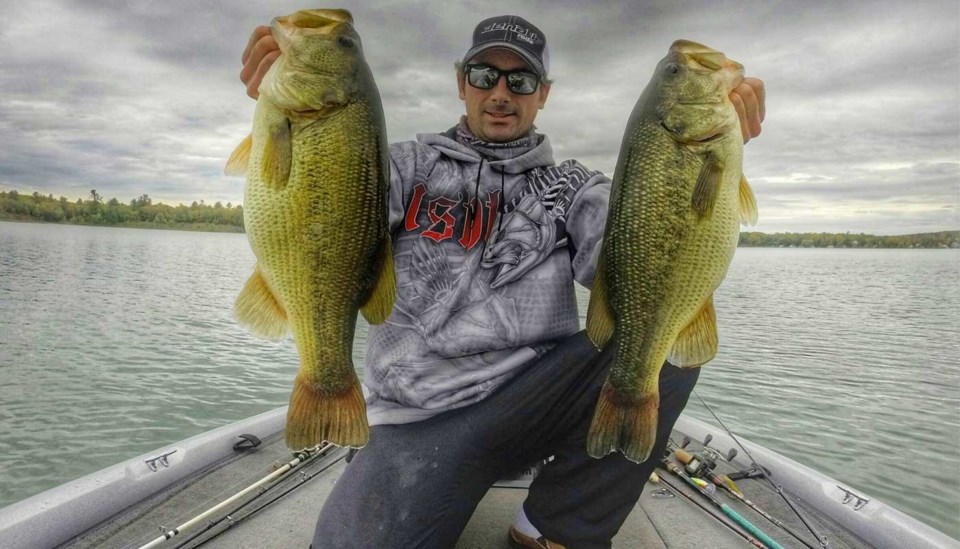When temperatures start to drop and the leaves begin to change, most people are thinking about putting their boats away. When it comes to the fall, that’s the last thing I am thinking about.
This time of year is when you have the best chance of catching a fish of a lifetime. A time I look forward to all year. Not to mention that not only can you catch a true giant, but you can catch them in great numbers.
Chasing largemouth and smallmouth bass in the fall starts with knowing about their movements throughout the year and prime locations where they will winter during the ice season. Whether you are chasing smallmouth or largemouth, the difference in migration patterns are significant.
Largemouth that primarily use shallow water and hang around heavily vegetated areas will group up and vacate to primary points on the main lake, or the deepest weedlines when rock is not abundant. They like to school together on points with rocky, hard-bottomed structure where bait will tend to always be feeding through.
You can also still find largemouth shallow throughout the fall following bait and hanging on the last green areas they can find, but this tends to be on shallower lakes where shallow vegetation is prominent.
In early to mid-fall, you can use much more aggressive and reaction-style baits, as their strike zones are much larger and they will still chase a bait a good distance.
Late fall is a time when you have to slow down and use baits that can stay in the strike zone a lot longer, as they will barely move to hit a bait. Earlier in fall, good bait selections include spinnerbaits, crankbaits, and lipless crankbaits. Later in fall, it's all about bottom baits like jigs, tubes, and drop-shot style baits.
- Kevin King
